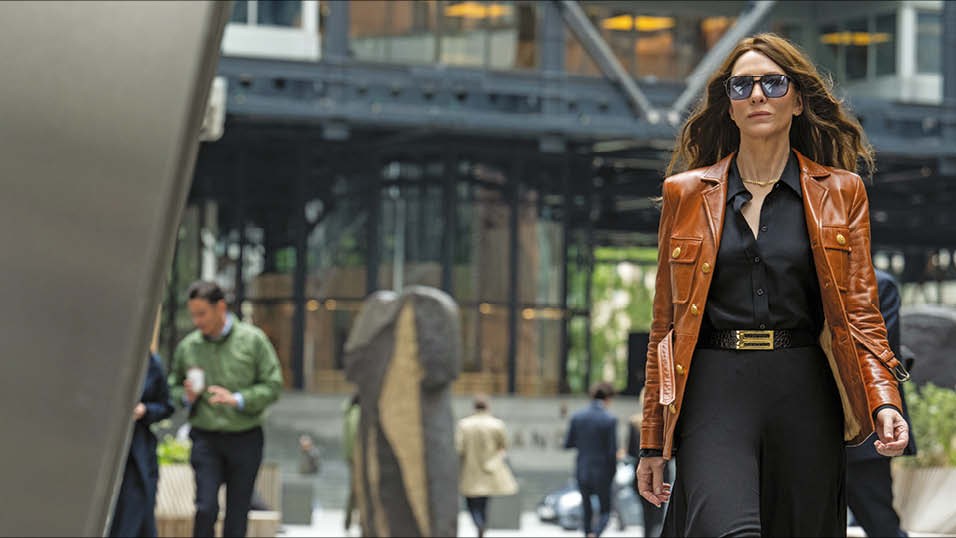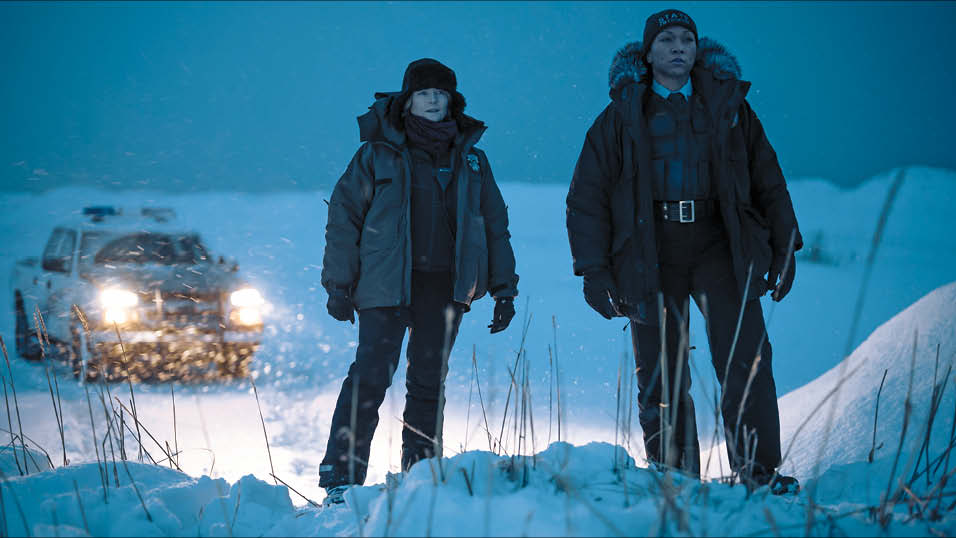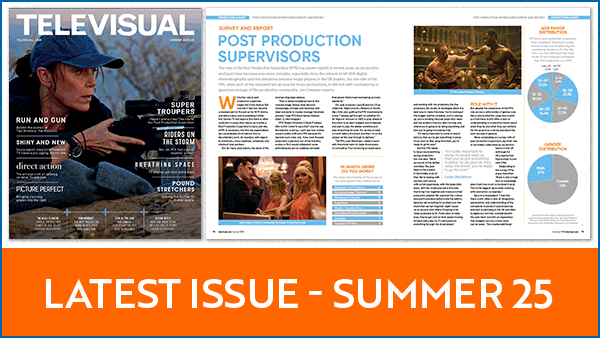Sky’s upcoming historical epic, Mary and George, is inspired by the true story of Mary Villiers, who moulds her beautiful and charismatic son, George, to seduce King James I and achieve immense power.
The series, made by Hera Pictures in association with Sky Studios for Sky and Starz, sees Mary (played by Julianne Moore) and George (played by Nicholas Galitzine) rise from humble beginnings to achieve riches, titles and huge influence on the English court.
The show covers relatively untrodden ground for film or TV drama, because while the lives of Henry VIII and Elizabeth I and other British monarchs have been revisited again and again on screen, James I’s court has been rarely touched upon.
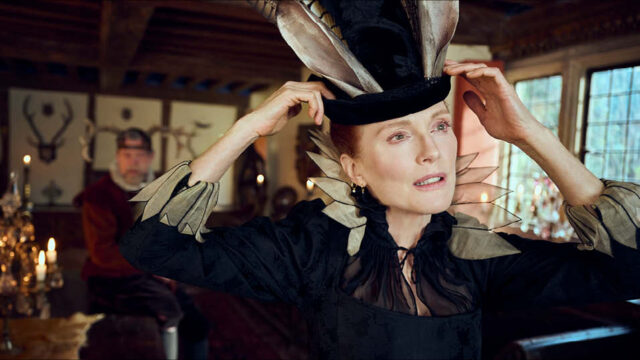
A good part of that has been a “historical nervousness”, as writer DC Moore puts it, with portraying James’ sexuality – far from a court secret in his time, but somewhat airbrushed in the histories that followed.
“But the fundamental truth is that the King’s court in Scotland and in England was based around his desire and love for attractive young men.” And to have a family member as the king’s favourite in that court was a route to power and influence. “George was pushed forward. But he wasn’t the only attractive young man who was pushed forward to lure the king.”
The idea for a series based on the particular story of Mary and George first came about back in 2018 when exec producer and Hera Pictures founder, Liza Marshall, spotted a listing in Time Out for a lecture on James I and his sexuality. “I had never heard that he may or may not be gay,” she says. “So, I started to research and discovered that there were three very significant male relationships in his life. And when I was casting around to find a way into this story, I came across Ben Wooley’s nonfiction book The King’s Assassin” the book that forms the backbone of the drama. At the same time, “I had read a couple of scripts of Dave’s (DC Moore’s) that had actually never got made, but they were so completely brilliant that I just always really wanted to work with him. So, I sent him the book.”

And, says DC Moore, there were many rich seams to mine. Firstly, because to an extent, James is “edited out of history” and it’s a “time that isn’t done to death on screen. It’s not the Tudors, it’s not Second World War” but Woolley’s book showed a story that was “so rich and brilliant.”
Part of that richness is James’ search for family, says Moore. “He didn’t have a family. His mother was sent to England when he was a baby, he became king as a baby, his dad had been murdered. Someone else who was probably really his dad was also murdered. He was completely alone.”
Because of that, as part of his “infatuation and his love for these men, he would project onto them his whole missing family. They were his family, as well as his love. To have that as the centre of your drama is beautiful.”
On top that, with the character of Mary Villiers, “you’ve got the introduction of this mother, coaching and moulding her son to be a lover to the king, and then using that as a way to launch herself into the court.”
For Mary herself, there was scope to “play with the rumours that she wasn’t really a Lady and that she’d made up her background and her stock. The rumours were probably not true, but I’ve leant into them because that felt very rich and amazing.” Mary and George also offered a “mother, son dynamic that I’ve not seen very often on screen.”
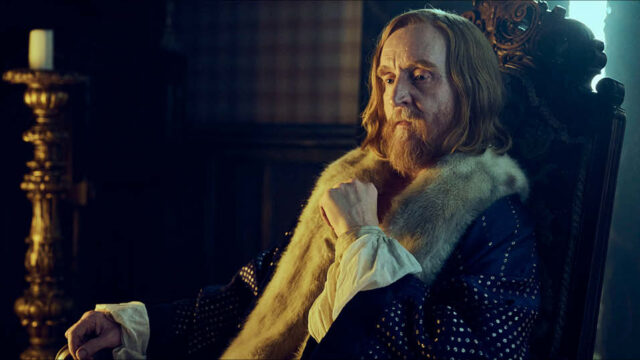
The story also offered a lot of freedom for the writer, says Moore. Because so little has been written about Mary particularly. “She isn’t in the spotlight, even though she was obviously pulling so many strings. That gives you a blank canvas. I get to own it as a writer quite greedily.” Wooley’s book serves as the spine and “I’d say 70- to 80% of the broader things that happen in the drama are true. We’ve edited things, we’ve changed some things, effectively the arc is real. But we have the freedom to dance where we want to dance. It’s an original drama based on history.”
From an initial script, in February 2020 Marshall took the idea to Gabriel Silver, then Sky Studios’ Director of Commissioning for drama as she was working with him on Hera Pictures’ crime drama Temple. “He loved it from the start, and we got our first positive read from Zai Bennett.” He was “really excited” and then the pandemic hit, “so it completely ground to a halt.” When UK production got back up and running “Sky were just trying to get the shows out that had been forced to stop filming.” In the meantime, Gabriel Silver left, and Meghan Lyvers took over “but luckily, they all still liked the show.”
Another major stroke of luck was casting Julianne Moore as Mary. “I just sent it to Julianne’s agent,” says Marshall. “She rang me very excitedly one Friday evening to say ‘I’ve read these absolutely brilliant scripts. And Julie’s never played a part like this. can we make an offer to her?’”
Says DC Moore, “It’s just sort of a dream, because it’s Julianne fucking Moore. And as well as how obviously brilliant she is, when you’re speaking to other actors and directors, everyone wants to be on board. It gives you an energy and an enthusiasm and a headwind.”
And that was important when there were 200 speaking roles to fill – “a huge endeavour, and the more people who want to want to join and are chomping at the bit for it, the more you get a deep calibre of actors drawn into it,” says Moore, including Nicola Walker, Niamh Algar, Tony Curran and Simon Russell Beale.
Having Julianne Moore on board also helped with the American side of the financing with AMC initially, and then Starz before the project went into production.
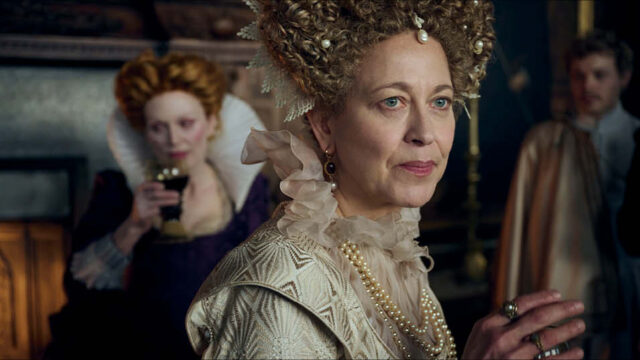
The shoot itself eventually ran from January to June 2023 helmed by lead director Oliver Hermanus, the South African director whose credits are almost entirely in movies. The perfect choice, say Moore and Marshall. “If you watch Moffie (Hermanus’ film about a South African military conscript hiding his true sexuality), there’s a brilliance to the sexuality and to men’s bodies,” says Moore. “We needed that because there are quite a lot of shows, particularly period dramas, where the sex becomes sort of infantile, a teenager’s view. We wanted to make sure that it felt real and wasn’t ever feeling arch.”
There’s also a “Weimar Republic feel to James’ reign,” says Moore “And the combination of sexuality, indulgence and luxury needed a filmic quality. Oliver brings all of that.”
“When we chose Oliver, we were really excited that he hadn’t done TV before,” says Marshall. The same thought process led to Oliver Coates being chosen as composer. “It doesn’t sound like any other TV and that’s really exciting. There are lots of moments in the show that I’m incredibly proud of. And they’re the moments where we were trying to make something new.”
“That was always the aim,” says Moore. “There are other period shows that you can reference. But whenever we talked about one, we said, ‘that’s not what we want to do. We want this to be Mary and George.’ Not looking to obvious TV tropes was really important to us.”
There’s scale to the series too. “Nobody realised until we got into the weeds of pre-production that no Jacobean costumes exist in any of the costume stores, or very few,” says Marshall. That meant that Annie [Symons, costume designer] and her team “had to make almost every single costume you see on the show. We had a huge atelier below the production office, about 50-60 people making all the costumes. Julianne Moore alone had 60 different dresses.”
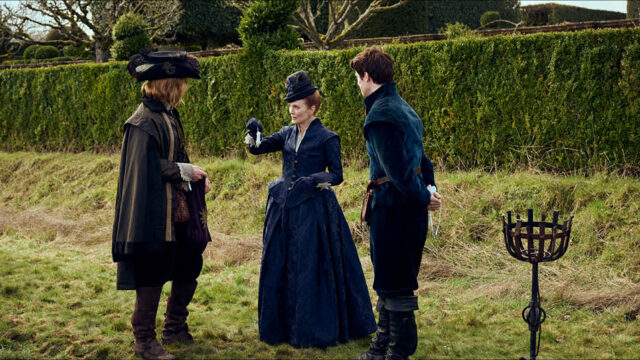
The series is shot across a huge number of locations too. “We were only in the studio for a very short time. It was a location-based shoot. So, it was a pretty epic undertaking,” says Marshall.
But the show being constantly on the move was a necessity, says Moore. “The nature of this story is about change and about rising. So, every episode had to be 10-15 different locations. It was incredibly hard for the schedule and hard for budgets, but it gives you a sense of Mary and George’s rise. The show is a journey into the heart of power and the locations track that. They get grander and more opulent as the show goes on.”
The array of locations also gives a “discipline. It stops you being lazy on some level,” says Moore and means the show is “visually very arresting.”
There was discipline to the historical accuracy too “They’re almost all Tudor and Jacobean houses, so it’s very period correct,” says Marshall. With Symons redressing rooms accurately and hair and makeup designer, Paul Gooch, constantly referencing portraiture of the time.
Moore also referenced the literature of the time. “I draw a lot from Jacobean drama. It is really dark and interesting. Tis Pity She’s a Whore is a staggeringly dark play that was put on a public stage.”
Moore also took “quite a lot of genuine dialogue from the time – from letters, from things that James said and things that George said. I try to weave through truthful things too. It is heightened but we did try to make sure it was grounded as well.”
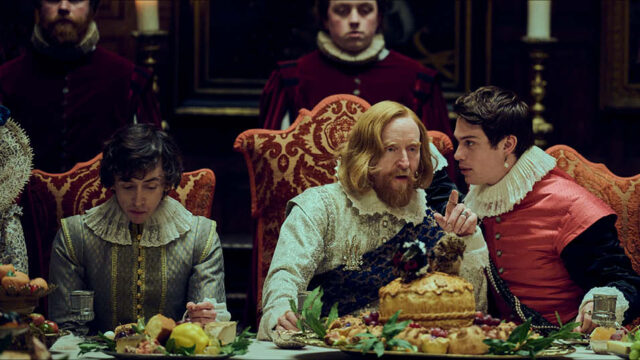
“That playful dance of how you represent the past is what appealed to me, to make that story feel alive and true. But that doesn’t mean giving everyone boring dialogue.” Because, he says, the reality was not boring. “James had a lewd, rich, interesting, naughty court that was fascinating to be a part of. And the tone of the show does mirror his world. He was someone who did curse, who did live a drunken debauched life but also took the conception of power and his role as King incredibly seriously. Those dualities are in the show. There is a playful, debauched feel but also, as things progress, it gets really serious. It hopes to be and wants to be an examination of power.”
Mary and George is on Sky Atlantic and NOW TV from March 5th
Jon Creamer
Share this story









